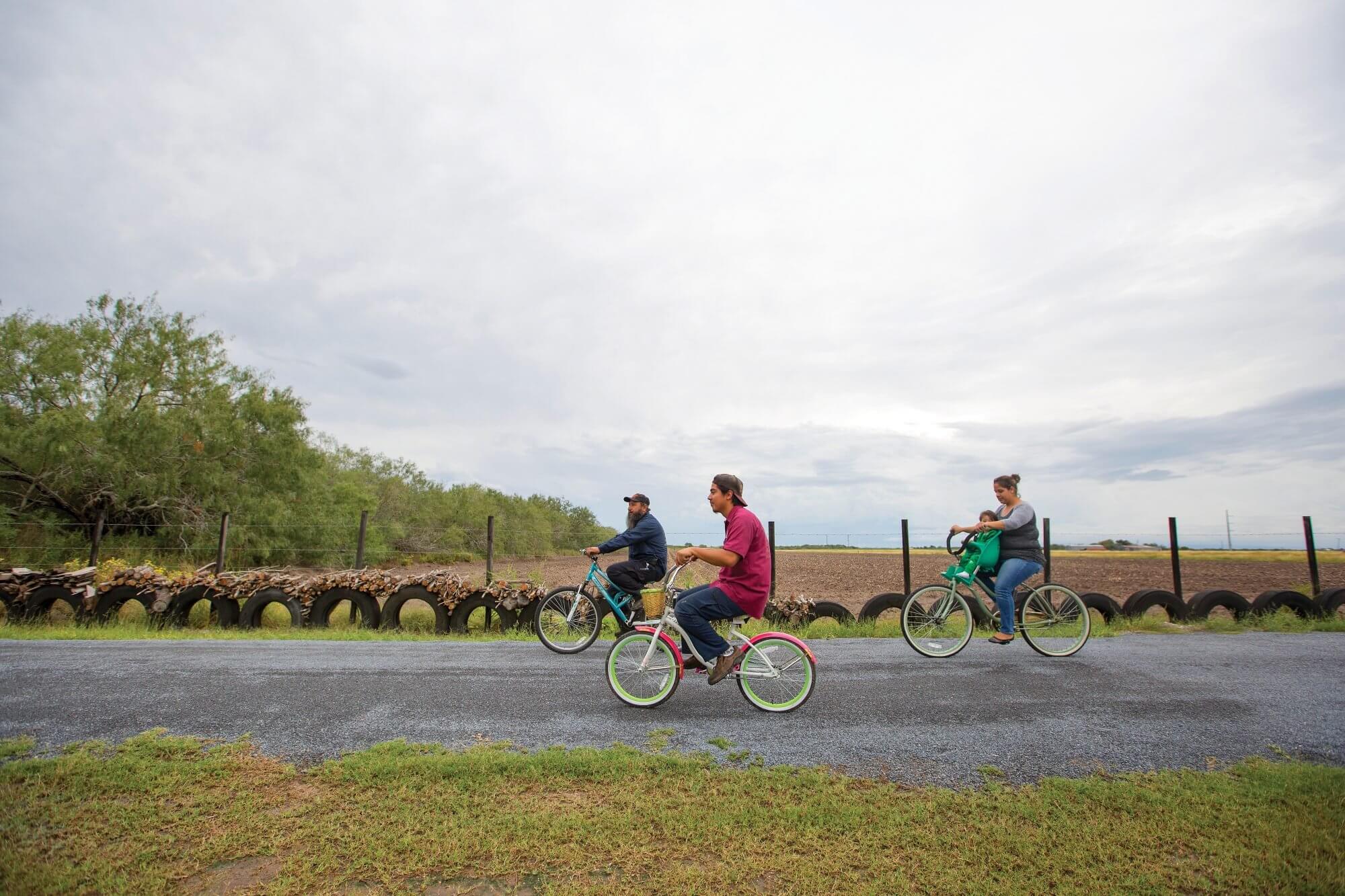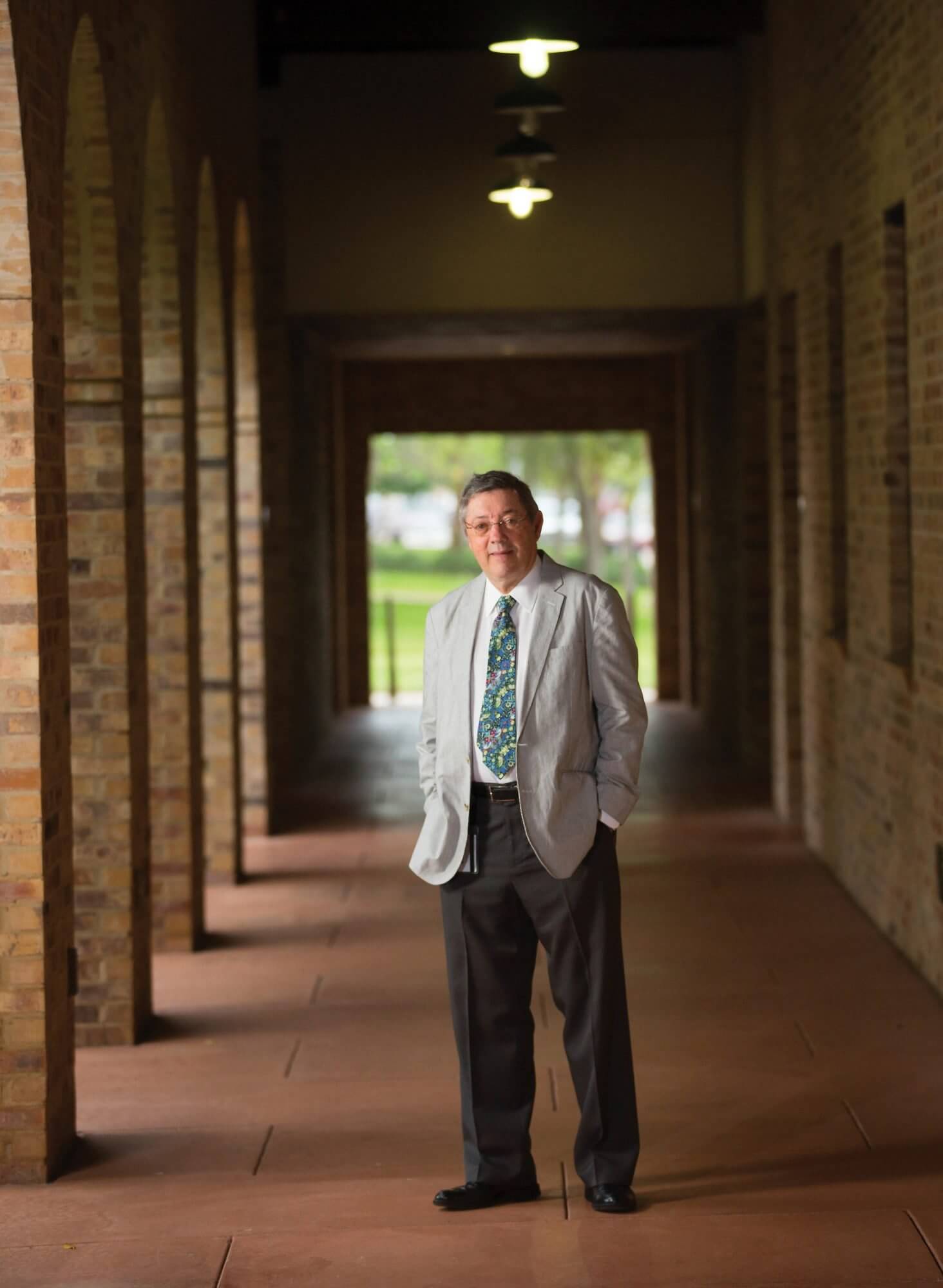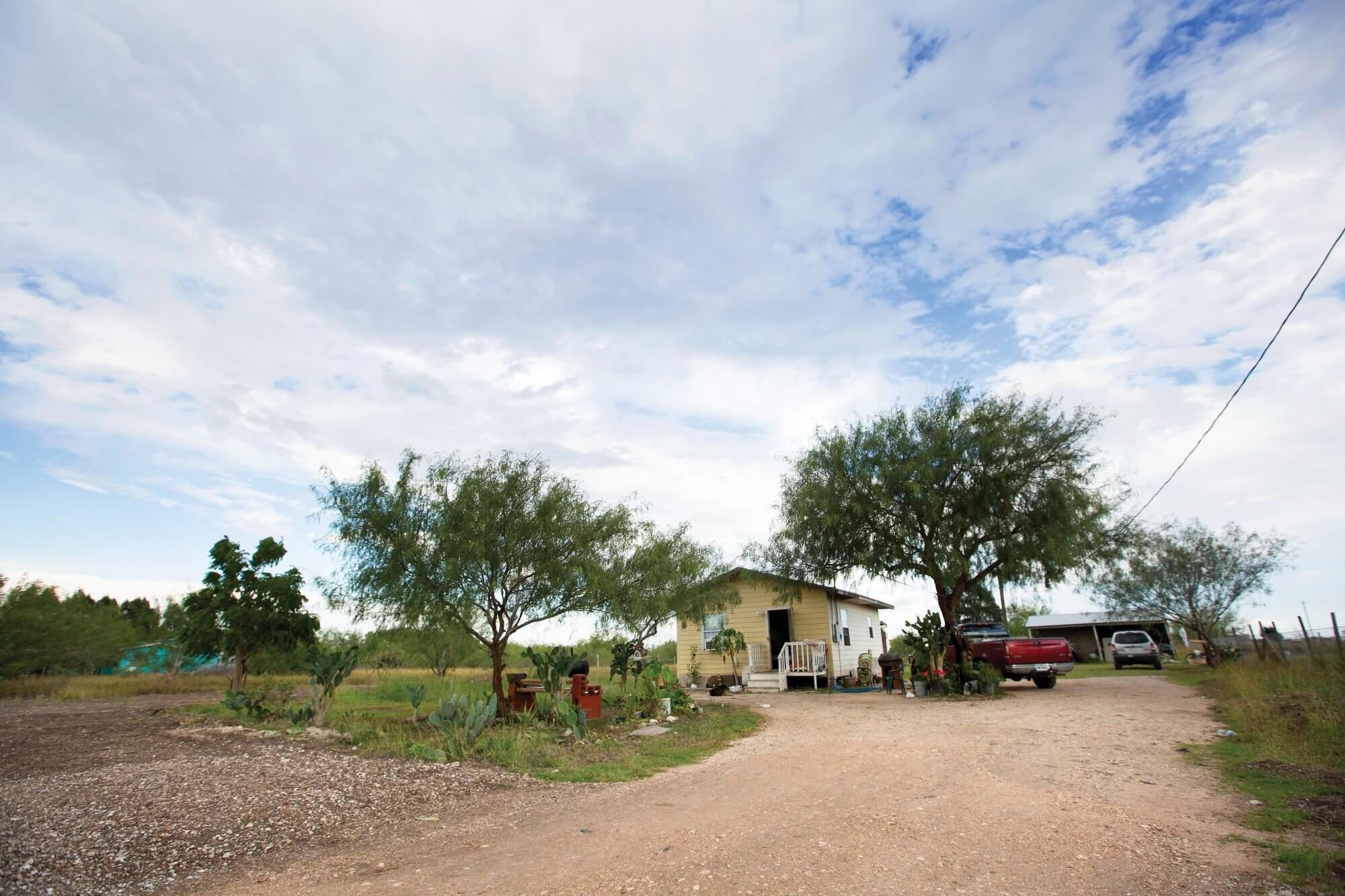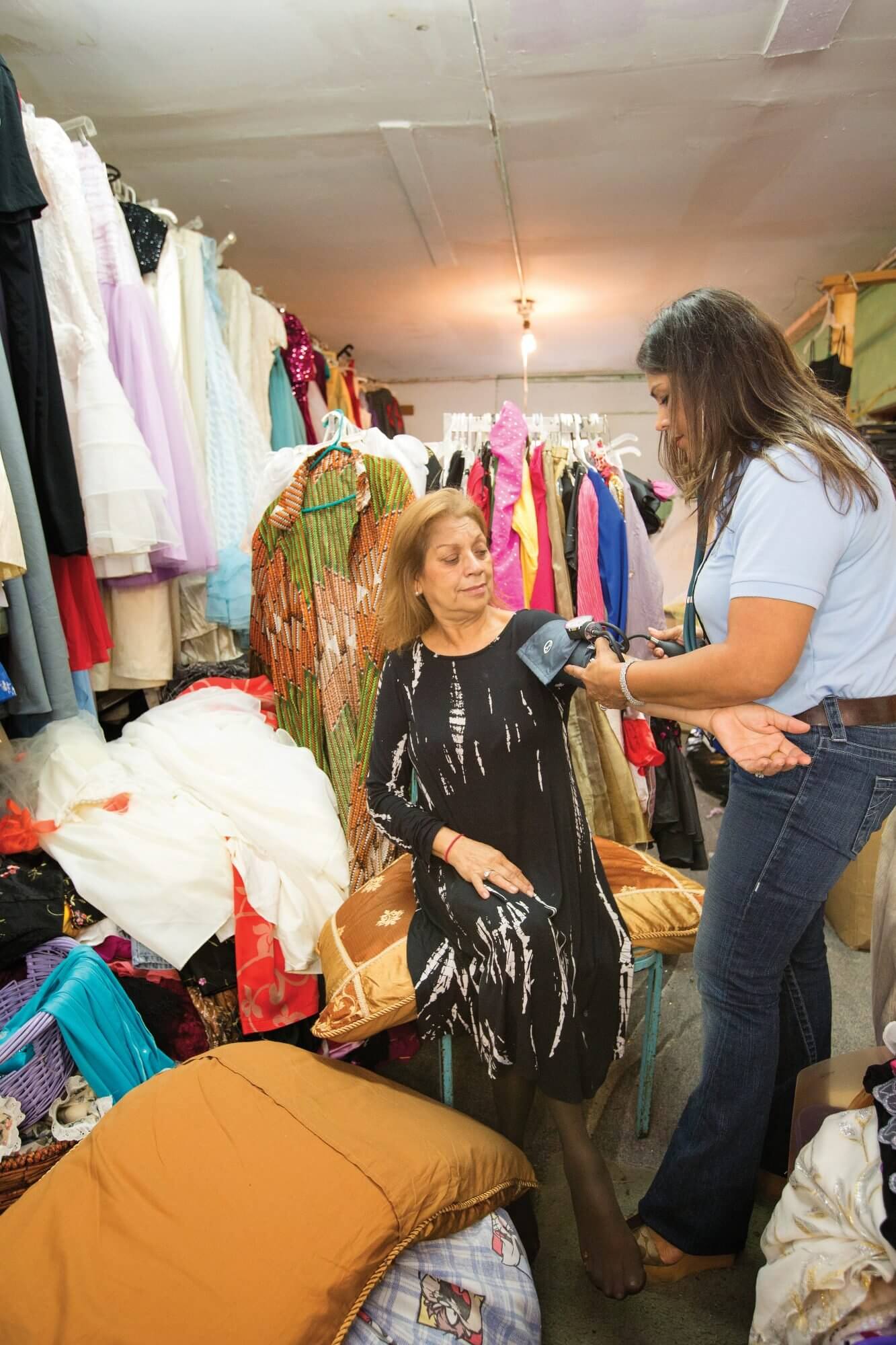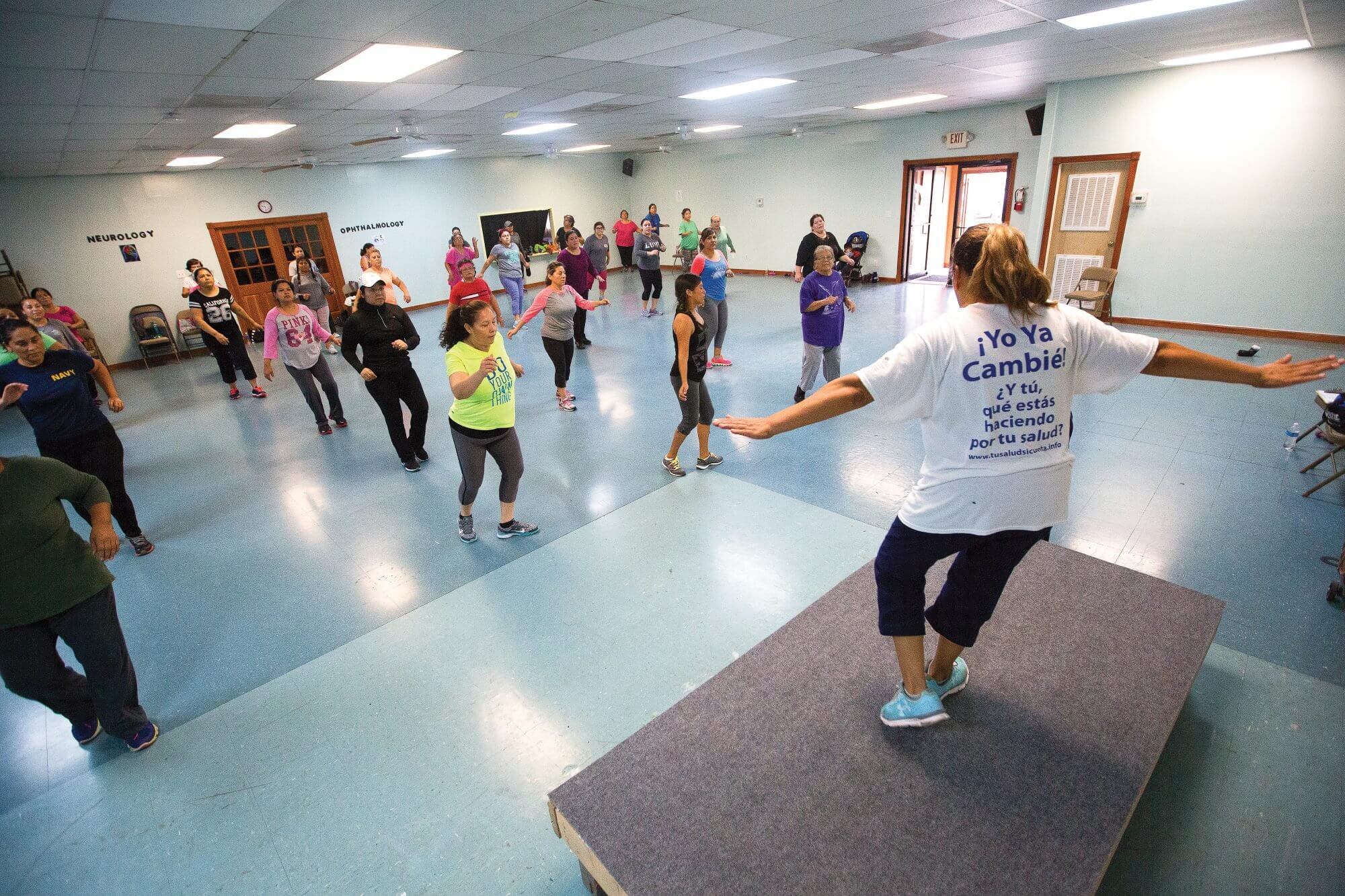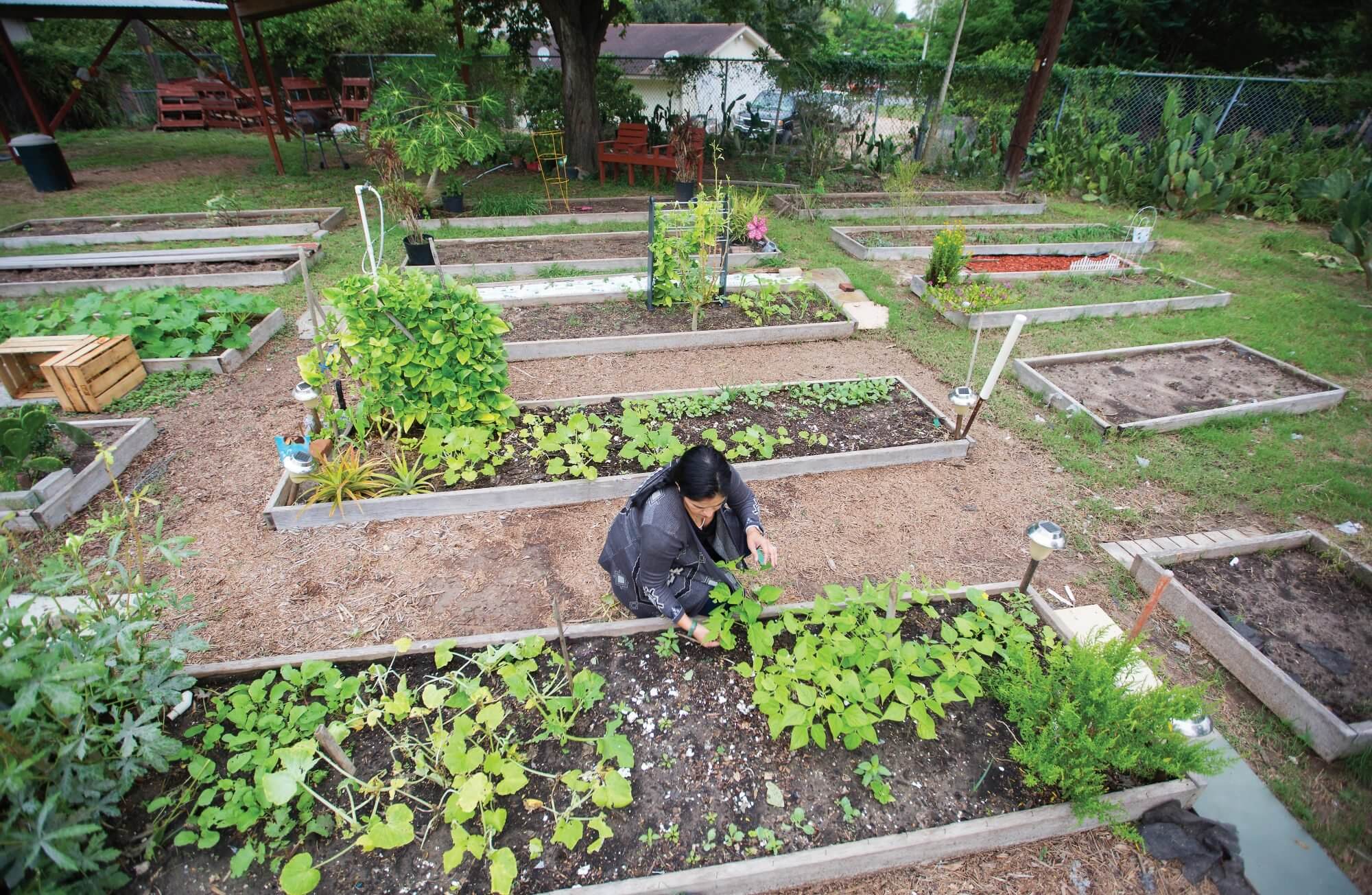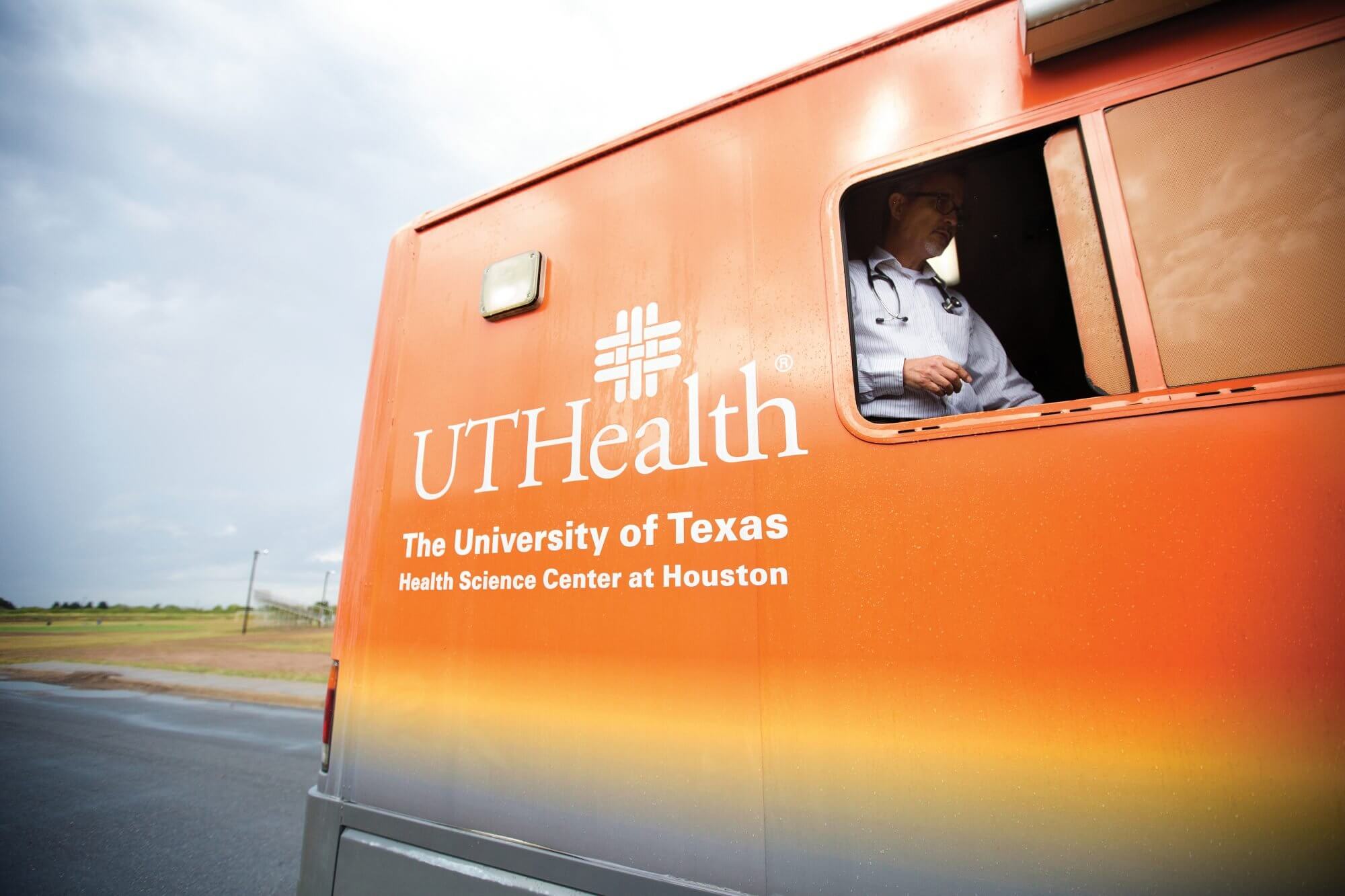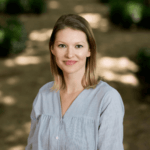Mobile Medicine on the Border
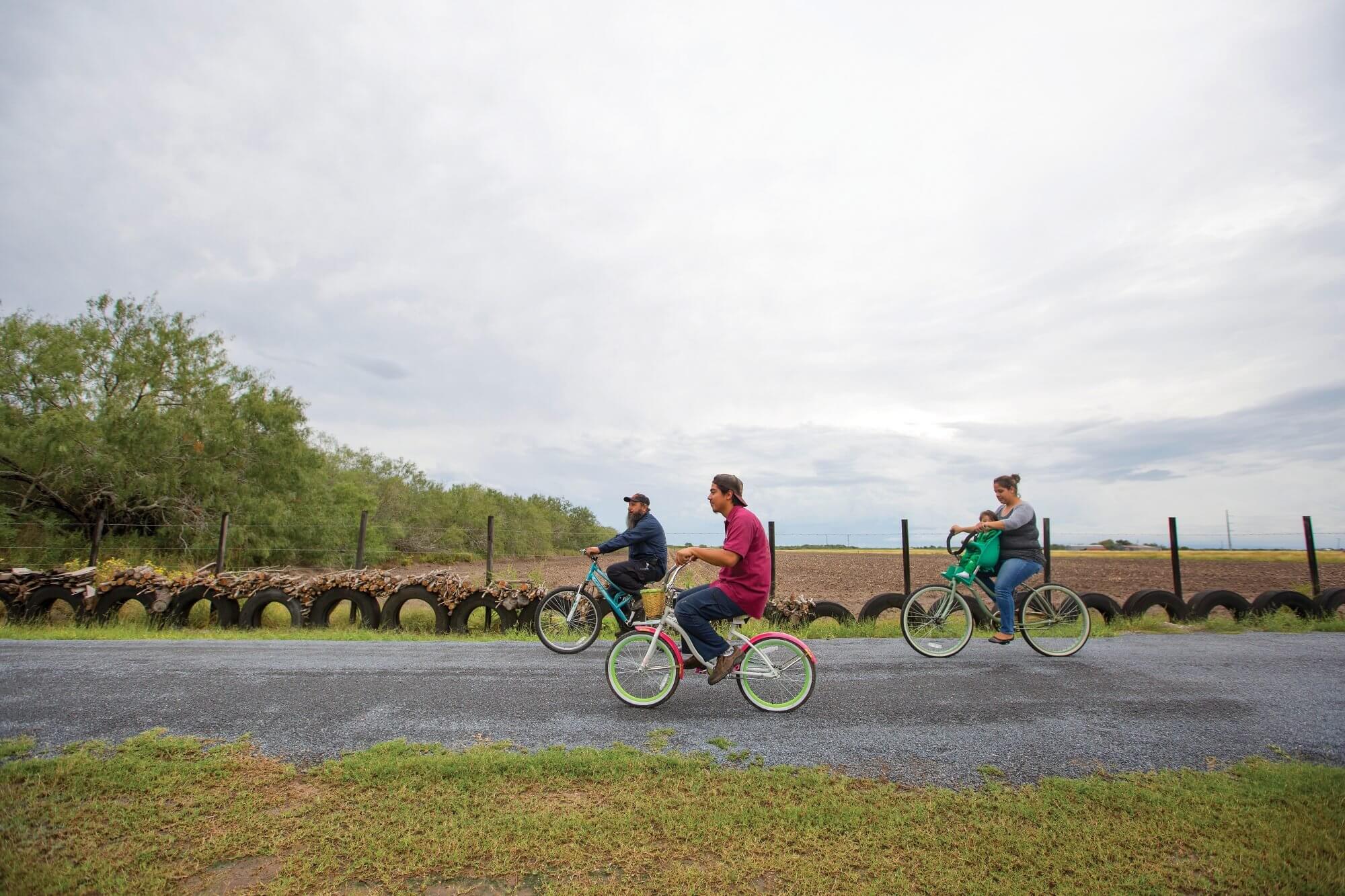
In the evenings after work, Francisco Garza and his family have a new tradition. After a healthy dinner at home, they head outside to a row of bicycles parked under a small grove of trees. The Texas sky yawns pink and orange and, one by one, Garza and his wife, sons, daughters and daughter-in-law hop on. Soon, they are speeding down the driveway past rows of tires stacked with wood and clay-cracked farmland that spans the horizon. They are racing against the sunset, and right now, the Garza family is winning.
Francisco Garza has Type 2 diabetes. Less than a year ago, he spent his nights couch-surfing before turning in early. Now, he likes to say he’s traded beers for bananas and tells everyone who will listen the grave importance of keeping their sugars under control.
“This illness,” Garza said in Spanish, “is a slow death. If we don’t figure out how to fight it ourselves, we won’t survive. We won’t survive in good condition, and my family depends on me being well. I don’t want to be a burden to my family in the future.”
Garza owes his health to his own hard work and grit, but also to the decision of one couple who moved from Lyons, France to Brownsville, Texas in 2001. Susan Fisher-Hoch, M.D., and her husband, Joseph McCormick, M.D., had been working in exotic locales around the globe—Pakistan, Africa, Brazil, France— addressing public health crises, particularly viral hemorrhagic fevers. But they had been aching to return home and hoped they could apply their expertise to a more local community in need. When the opportunity arose to start a new regional school of public health for The University of Texas Health Science Center at Houston (UTHealth), they immediately headed to the southernmost tip of the second largest state in the nation.
“We’ve always worked in mixed-culture, mixed-language settings, and we enjoy it,” said McCormick, now the regional dean of the UTHealth School of Public Health in Brownsville. “When we decided to come here, we said, ‘Let’s set up our research program, but let’s make it translate into real change in the community, a real opportunity for affecting the health of the community.’”
Their first challenge was to determine the biggest health issues facing the region, which meant collecting raw data. Starting from scratch in 2003, they applied for a National Institutes of Health (NIH) grant under what was then the new National Institute on Minority Health and Health Disparities. They were awarded $7.5 million. With funding and resources in hand, the team descended upon the Rio Grande Valley, one house at a time. Going door-to-door, Fisher-Hoch, McCormick and their team created a local cohort for clinical research that has since grown to more than 4,500 individuals.
“This needed to be a random sample of the population so we could really measure the prevalence of these conditions and chronic diseases,” McCormick said.
As a core component of the UT Center for Clinical and Translational Sciences (CCTS), a region-specific clinical research unit was created to gather data for a first-of-its-kind long-term study of this population. Participants in the cohort are asked to follow up every five years and are invited to join in other research being set up. If disease or risk factors are found, researchers connect them with appropriate medical care.
“We can’t do intervention because it’s a cohort and it’s for understanding what it is we need to do,” explained Fisher-Hoch, a professor in the Department of Epidemiology, Human Genetics & Environmental Sciences at the campus who also oversees the clinical research unit. “If you use the data we generate to figure out who it is, what they’ve got, where they are and what the risk factors are, then you know what you’re doing.”
Since its creation in 2004, the clinical research unit has published more than 40 papers defining the burden of disease in the area. The statistics are sobering.
“We have the highest amputation rates in the country,” Fisher-Hoch said. “We have the highest rates of liver cancer. We have the highest rates of a lot of things, including diabetes, of course. These all go together.”
Based on the data collected and analyzed, more than 50 percent of the adult population is obese, and another 30 percent is overweight. Twenty-eight percent has Type 2 diabetes, though 43 percent don’t know it. Of those who know, only half are under treatment. More than 33 percent of the population has hypertension, but 40 percent of that group goes untreated. All this is compounded by the fact that nearly 70 percent of the population is uninsured.
“This is what poverty looks like,” McCormick said.
Salud y Vida
The team’s initial efforts to collect health data from the local population were simultaneously supported by the creation of a community advisory board and outreach program. In McCormick’s words, they are not just sitting there in an ivory tower, writing papers.
“We want to work with you, try to empower you to be able to take matters in your own hands, change your community and do better,” McCormick said in an interview on campus, where buildings are lined with ceramic Mexican tiles and surrounded by lush landscaping dotted with palm trees.
McCormick emphasized the multifaceted approach of their mission and the importance of pulling every corner of the city and surrounding areas into one large support network.
“Everything that we’ve tried to put into place has been through partnerships,” said Belinda Reininger, Dr.P.H., the lead researcher for UTHealth’s community-wide health initiative and co-director of the CCTS Community Engagement Core. “It’s not like the school of public health came in and we have done all this stuff—it’s not that at all. It’s actually the exact opposite of that. Everything we’ve done has been in partnership and through collaboration. It’s about integration of research and teaching and community outreach.”
Because diabetes affects more than 25 percent of the population, much of the program’s work is linked to its detection and management, with a focus on education, access to healthier foods, exercise classes and medication, if necessary.
The Salud y Vida (Health and Life) program is made up of local organizations dedicated to helping community members with uncontrolled diabetes, most of whom are uninsured. It is part of a Medicaid 1115 Waiver, which allowed Texas Health and Human Services to expand Medicaid managed care to impoverished areas.
The program is built around community health workers, known as “promotoras,” who go door-to-door to provide education, encourage behavior change and offer referrals and support for improving blood sugar results. At home and in the workplace, the promotoras build continuity between the messages delivered by the providers of the Salud y Vida program during clinic visits and the participants’ actions at home and in the community. If uncontrolled diabetes was diagnosed, promotoras support and educate individuals on everything from A1C tests (which measure average blood glucose levels) to foot sores—a hallmark of diabetes and one that often leads to amputation.
“When the promotora first came to take my A1C, she said, ‘Not good, sir, lose weight,’” Garza said. “I didn’t even know what A1C was. I thought A1C was an energy drink, one of those like Red Bull. I mean it. Why? Because, my whole life I knew about the law, immigration, attorneys, accidents, about everything, I knew. But I didn’t know about health. I focused on fighting for my family to grow, for them to be respectful, honest, hard-working, but I never thought of learning about health.”
Garza is a family man, his face framed by a long beard he’s been growing for two years as a religious promise for one of his sons. He built his auto business—The Family Road Service—for his children to inherit. His house, painted a robin’s egg blue and situated on a sizable, well-kept strip of land, is home to multiple members of his family, including children and in-laws. He is grateful that they have all embraced a healthier lifestyle.
“God has blessed me through the effort my wife has made, my family has made,” he said, “because eating doesn’t change for the diabetes patient only. No one got away in my house. Why? Because they have to look after father-in-law or grandpa? No. Because they’ve also learned that they need to have a balanced diet and exercise to have healthy lives.”
It’s a complicated process, putting patients in charge of their health, but for individuals living with Type 2 diabetes and other chronic but manageable medical conditions, it can mean the difference between life and death.
“Instead of just handing participants a piece of paper and saying, ‘Here, change your diet,’ we’re looking at: What does that mean? What can you afford? How do you cook that? What are some ideas for access?” explained Lisa Mitchell-Bennett, M.P.H., M.A., project manager for campus-based outreach and research. “In every way, we want to create a back-up system or a support system for implementing those recommendations.”
The entire city of Brownsville, it seems, is on board. Local churches have opened their doors to exercise classes rooted in Zumba® and Latin dance. Evening sessions feature tips on portion sizes and nutrition labels, as well as “diabetes bingo.” The Brownsville Wellness Coalition, which has funding provided by CCTS, was created to manage the Brownsville Farmers’ Market, five community gardens, a mobile farmer’s market, and gardening and cooking classes. And the City of Brownsville is currently in plans to create a more bicycle- and walking-friendly city. The UTHealth team also broadcasts weekly health segments on local television, and Mitchell-Bennett writes a regular column about health promotion practices for two newspapers in Cameron County.
“It’s systematically changing our community through policy change, environmental change, media, social media, community health workers—all of it,” Reininger said. “Addressing health disparities is not a simple fix, so we’re not trying to simplify. We’re trying to build complementary strategies.”
A safe haven
Located on the border where the Rio Grande and a high metal fence are visible from countless vistas, the Valley is home to many low-income and uninsured residents, some of whom do not qualify for health care in the U.S. and who find it difficult to make a living wage.
Recognizing this gap, UTHealth commissioned the Mobile Health Clinic for under-insured patients or patients with no health insurance at all. Regardless of legal status or ability to pay, the mobile clinic is a safe haven for those in need of acute care for minor illnesses and injuries, immunizations, blood tests, well women exams, physicals, help managing diabetes, and more.
Painted burnt orange and outfitted with a small exam room and sitting area, the clinic is run by Paul Toscano, a physician assistant who grew up in Harlingen, about 30 miles north of Brownsville. As a young boy, Toscano had always dreamed of going to medical or dental school, but life took him in a different direction. After college, he moved to San Francisco to work as a news videographer for an ABC network station and spent years chasing stories up and down the Northern California coast. One day, he found himself working on a segment about migrant health workers, many of whom were sick with nowhere to go. Their stories pulled at his long-buried dreams and, then and there, he decided to go back to school.
The clinic parks at five different locations throughout the area for two months at a time. Initially, its purpose was to focus on screening and acute care, but it has grown to treat chronic illnesses, as well, and is now the only clinical care many have. Toscano and his medical assistant, Flor, take time to educate their patients.
“We do a lot of social work here,” Toscano said. “When patients come in, they get the diagnosis, the education, we do the physical exam—we do everything. Before they walk out, we always help them find their medications and then we can tell them where to go and give them coupons. The visit takes a lot of time, but we want to provide them with the whole spectrum of care.”
Nelda Cantu-Cruz is a local kindergarten teacher and a patient at the mobile clinic. Due to a medical disability, her husband is unable to work, so she is the sole source of income for her household. Although the school provides her with insurance—for a fee of $525 a month—she cannot afford the additional $4,000 deductible.
“This clinic has been sent from heaven for my husband and myself,” she said. “The only thing I can afford is this little bus.”
Cantu-Cruz shares the clinic’s number with anyone in need, especially at her school where the majority of her students are first-generation citizens, whose parents are often at a loss when it comes to seeking out medical care.
“It’s sent from heaven for them because they have nowhere to go,” she said. “Even people that work can’t afford to go to the doctor. I have insurance but if I didn’t use this bus, I don’t get to pay all my lights. I don’t get to buy groceries.”
The clinic has created partnerships with local hospitals and specialists as far away as Houston for cases that require further expertise and care. Toscano is currently collaborating with The University of Texas MD Anderson Cancer Center to provide specialized cervical screening for his patients, and he is always looking for new specialists willing to offer their resources to this population.
Just getting started
Slowly but surely, the Rio Grande Valley is getting healthier.
Salud y Vida has determined that 70 percent of the program’s participants have lower glucose levels at their three-month follow-up visit and the community is spreading the word about diabetes management and prevention. Basic health care is now accessible to an increasing number of residents, and the UTHealth School of Public Health in Brownsville, which has brought more than $70 million in grants and funding to the region since McCormick and Fisher-Hoch arrived, says it’s just getting started.
“This is working because of our local partners, our community advisory board made up of hundreds of organizations in this region, but also partnerships with UT and other institutions across the state,” Reininger said. “We’re accessing funding from a variety of places but also have a common vision of what to do with it.”
Their initiative has been so well-received that, according to McCormick, the model they created for translating scientific research into community impact will be integrated into The University of Texas System’s new plan for population health.
“I feel like our achievement is not just here in Brownsville, but it’s also reached across the state,” he said. “We’re starting to do what we said we would do.”
During a recent home visit, Francisco Garza sat at his kitchen table while a community health worker measured his blood pressure and glucose levels. A bowl of fruit had been scooted to the side to make room for new informational handouts. Around them hung photos of the Garza family and images of the Virgin Mary.
Garza’s levels looked good, and he felt happy that his hard work was paying off. Finally, he asked the question that had been weighing on his mind: How could he become a promotora himself?
Overhearing this, his wife laughed. “You’re telling everyone you know about being healthy,” she said, noting the neighbors, his clients and the random person sitting next to him at a Salud y Vida event. “You’re already a promotora!”

